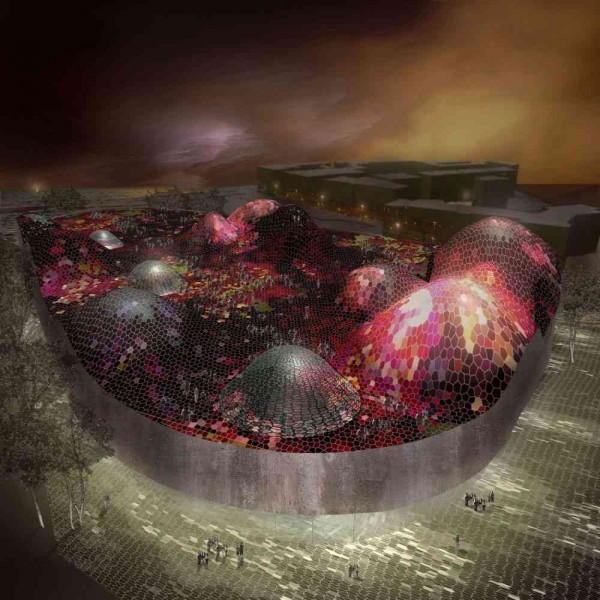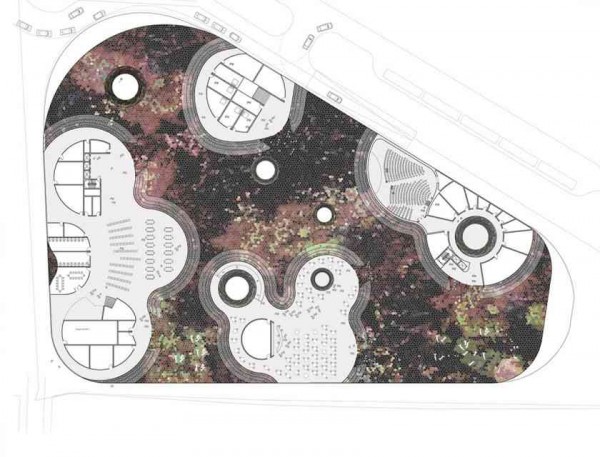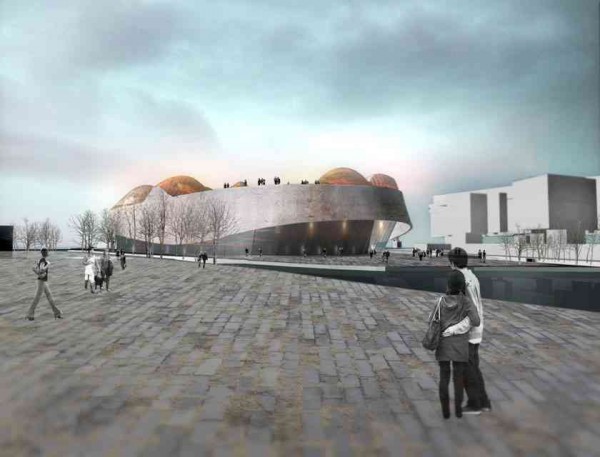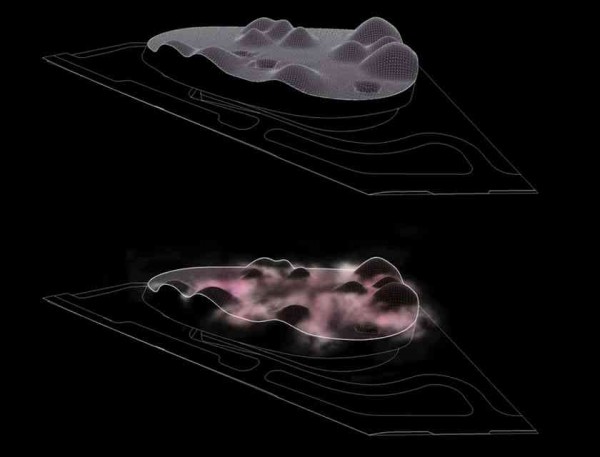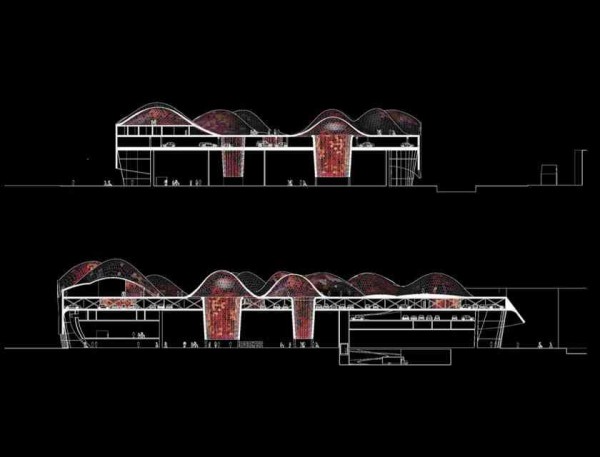The project for the World War Museum in Gdansk designed by Chicago-based architect Sean Lally is organized around two straightforward principles. The first is to create a central exhibition core, a “jewel box” that contains the permanent and temporary exhibition space, continuously accessible from all sides along a “loop lobby” that encircles it: the second is the location of the public programs associated with the museum’s urban context–conference, restaurant, hotel, library, and education facilites as well as an urban park–on the upper level rooftop, initiating a “new city floor” with views to the surrounding city, accessible year-round. Making these outdoor public spaces attractive to visitors regardless of season requires the design of a “climatic wash’ that can produce artificial micro-climates and extend seasonal activities throughout the year.
This wash is made possible by harnessing the energy dumps that inevitably occur in a building of this scale (36,000 m²), which requires 900 m² of mechanical space and 11,000 m² of parking garage, both of which vent large amounts of heat and moisture, as well as the combined body heat of several thousand visitors a day. This climatically elastic and unique ‘new city floor’ is the resource for the museum and the city of Gdansk as a whole.
Upon exiting the elevators from the museum level, the “new city floor” opens up a new visual perspective of Gdansk. The lobby elevators at the north entrance access the library, which looks directly onto the park and garden with views to the city beyond. The ground of the park is covered primarily in brightly colored tiles, which move up seamlessly to become the facades of the public buildings and fade to the transparency of stained glass at their peaks. At night, these tiled windows glow from within and become beacons of light visible from the entire city. The system that collects, harnesses, and redeploys the building’s expelled energy is located underfoot, working underneath and through the mosaic to create the microclimates of the “new city floor”.
The permanent exhibition and the related programs of the entrance, temporary exhibition administration, and IT are located within this uninterrupted wrapper, accessible from the first floor. Primary access to the museum, including vehicular drop-off, is located at the northeast corner of the site. Entering through the exterior curtain wall wrapper, visitors can walk along the continuous loop lobby that runs along the highly polished interior facade of the exhibition space, taking in views of the surrounding promenades and canal. This concentric circulation around the “jewel case” of the museum exhibition space allows for fluidity of movement as well as a unique visual experience of the city.
Areas of rest in the permanent exhibition area are experientially connected to the upper level public spaces. These areas allow for quiet and peaceful moments, where the sun enters the from above and contrast with the shade of the exhibition spaces. Elevators are located in two locations along the continuous lobby and bring visitors directly up to the “new city floor”.
The museum is accessible from all sides through a continuous ‘loop lobby’ that surrounds the exhibition spaces while allowing visitors direct views to the canal. Passengers dropped off by car enter through the main lobby on the northeast corner, while pedestrian traffic from the canal or from the south promenade enter through one of the side entrances.

